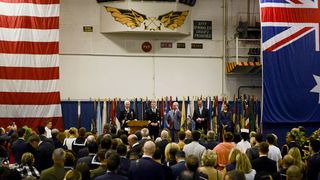Foreword
In an increasingly contested Indo-Pacific, the United States, Australia and their regional allies and partners face a myriad of strategic challenges that cut across every level of the competitive space. Driven by China’s use of multidimensional coercion in pursuit of its aim to displace the United States as the region’s dominant power, a new era of strategic competition is unfolding. At stake is the stability and character of the Indo-Pacific order, hitherto founded on American power and longstanding rules and norms, all of which are increasingly uncertain.
The challenges that Beijing poses the region operate over multiple domains and are prosecuted by the Chinese Communist Party through a whole-of-nation strategy. In the grey zone between peace and war, tactics like economic coercion, foreign interference, the use of civil militias and other forms of political warfare have become Beijing’s tools of choice for pursuing incremental shifts to the geostrategic status quo. These efforts are compounded by China’s rapidly growing conventional military power and expanding footprint in the Western Pacific, which is raising the spectre of a limited war that America would find it difficult to deter or win. All of this is taking place under the lengthening shadow of Beijing’s nuclear modernisation and its bid for new competitive advantages in emerging strategic technologies.
Strengthening regional deterrence and counter-coercion in light of these challenges will require the United States and Australia — working independently, together and with their likeminded partners — to develop more integrated strategies for the Indo-Pacific region and novel ways to operationalise the alliance in support of deterrence objectives.
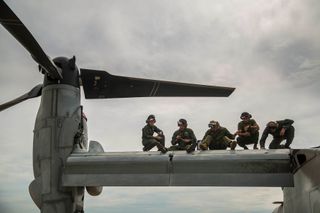
There is widespread support for this agenda in both Washington and Canberra. As the Trump administration’s 2018 National Defense Strategy makes clear, allies provide an “asymmetric advantage” for helping the United States deter aggression and uphold favourable balances of power around the world. Australia’s Minister for Defence Linda Reynolds mirrored this sentiment in a major speech in Washington last November, observing that “deterrence is a joint responsibility for a shared purpose — one that no country, not even the United States, can undertake alone.”
Forging greater coordination on deterrence strategy within the US-Australia alliance, however, is no easy task, particularly when this undertaking is focussed on China’s coercive behaviour in the Indo-Pacific. Although Canberra and Washington have overlapping strategic objectives, their interests and threat perceptions regarding China are by no means symmetrical. Each has very different capabilities, policy priorities and tolerance for accepting costs and risks. Efforts to operationalise deterrence must therefore proceed incrementally and on the basis of robust alliance dialogue.
To advance this process of bilateral strategic policy debate, the United States Studies Centre and Pacific Forum hosted the second round of the Annual Track 1.5 US-Australia Deterrence Dialogue in Washington in November 2019, bringing together US and Australian experts from government and non-government organisations. The theme for this meeting was “Operationalising Deterrence in the Indo-Pacific,” with a focus on exploring tangible obstacles and opportunities for improving the alliance’s collective capacity to deter coercive changes to the regional order.
Both institutions would like to thank the Australian Department of Defence Strategic Policy Grants Program and the US Defense Threat Reduction Agency for their generous support of this engagement.
The following analytical summary reflects the authors’ accounts of the dialogue’s proceedings and does not necessarily represent their own views. It endeavours to capture, examine and contextualise a wide range of perspectives and debates from the discussion; but does not purport to offer a comprehensive record. Nothing in the following pages represents the views of the Australian Department of Defence, the US Defense Threat Reduction Agency or any of the other officials or organisations that took part in the dialogue.
Ashley Townshend
Co-Chair, US-Australia Indo-Pacific Deterrence Dialogue US-Australia Indo-Pacific Deterrence Dialogue
Director, Foreign Policy and Defence, United States Studies Centre
David Santoro
Co-Chair, US-Australia Indo-Pacific Deterrence Dialogue US-Australia Indo-Pacific Deterrence Dialogue
Vice President and Director for Nuclear Policy, Pacific Forum

Executive summary
- The United States and Australia need to bolster their contributions to deterrence and defence in an increasingly contested Indo-Pacific. This will require updating and future-proofing the US-Australia alliance so that it keeps up with the pace, scale and intensity of the multidimensional challenges that China is posing the regional order. Developing integrated and combined approaches to deterring grey zone coercion, political warfare, economic leverage, military threats and nuclear pressure should be a top priority for the alliance going forward.
- Canberra and Washington hold broadly similar views on the nature of China’s strategic objectives in the region. Both have judged that Beijing is seeking to displace the United States as the dominant power in the Western Pacific in the near-term and, eventually, across the wider Indo-Pacific. China’s willingness to use coercion in pursuit of regional dominance places it in competition with Indo-Pacific countries that want to preserve a strategic order in which all nations are free to exercise their sovereignty.
- This contest is playing out in multiple domains and cuts across the full spectrum of competition. Drawing on its vast whole-of-nation resources, Beijing is using influence campaigns, information operations and other forms of political warfare at the low end; grey zone tactics, economic leverage, cyber-attacks and coercive statecraft at the mid-level; and conventional military threats and the shadow of strategic-nuclear escalation at the high end. Its underlying approach is to combine these vectors of coercion to incrementally transform the geostrategic status quo to its advantage.
- Any effective strategy by the United States or Australia to deter Chinese coercion must operate across this same spectrum of competition. Denying Beijing the ability to gain or wield leverage cheaply — by building domestic resilience, strengthening physical and metaphorical defences, and issuing credible deterrence threats in advance — is the surest way to give Chinese policymakers reason to take pause. This, however, raises difficult decisions for government about their interests, red-lines and willingness to accept costs and risks, which neither country’s leadership has sufficiently broached.
- Forging closer US-Australia alliance coordination on shared deterrence objectives will be even more difficult. Although Washington and Canberra have overlapping strategic aims in the Indo-Pacific, their interests and preferences for action are not symmetrical. This is especially true when it comes to thorny questions about political risk-taking and military escalation vis-à-vis China. It is nonetheless crucial for deterrence resolve and alliance credibility to build common fronts on potential contingencies, such as limited war in the Pacific or along the First Island Chain. Both allies should approach this goal incrementally, including through targeted workshops and crisis simulations.
- There is a broad agreement that Washington and Canberra need to accept greater risks and take the initiative to effectively deter Chinese grey zone coercion. This involves understanding and anticipating how Beijing builds-up influence to acquire non-military leverage, and active steps to neutralise or flip this dynamic on its head. To achieve the latter, allies could consider: more attribution of China’s grey zone actions, targeted bans or indictments for malign actors, and the use of countervailing grey zone operations.
- Upholding a favourable balance of power in the Indo-Pacific will increasingly depend on the ability of the United States and its allies to coordinate conventional armed forces around shared deterrence objectives. Although Canberra and Washington agree that deterrence is a joint responsibility, there is no consensus on what degree of alignment is militarily necessary or politically sustainable in particular scenarios. This should be a priority for alliance consultations. In the meantime, the United States and Australia should gradually pursue collective deterrence goals by co-developing new war-fighting concepts, enhancing technological development and experimentation, and advancing combined capability, interoperability and force posture objectives.
- From Washington’s perspective, Taiwan is the pacing scenario for American military preparedness and allied progress towards collective deterrence and defence. It is set to become an increasingly difficult issue in the US-Australia alliance — particularly as the Trump administration is already seeking to draw allies into Taiwan policy discussions. Australia does not have a clear sense of what the United States’ objectives or alliance expectations might be in a crisis and should rectify this through closed-door dialogue.
- Another emerging friction point between the United States and Australia is on nuclear strategy and arms control. Washington’s decision to pursue greater integration between its conventional and nuclear forces raises anxieties about a lowering of the threshold for nuclear use. Australia is also concerned by the Trump administration’s possible opposition to renewing the US-Russia New START agreement. These issues could harm alliance cohesion and planning, and make it more difficult for Australian leaders to publicly discuss the benefits of strengthening extended deterrence.
- It remains unclear whether strategic competition with China should be understood as a contest between spheres of influence or a search for a favourable balance of power. While there is a rhetorical consensus that, in contrast to the Cold War, Washington will not grant Beijing preferential control over its immediate periphery, the establishment of a de facto Chinese sphere of influence remains a possibility. Preventing this outcome must proceed in ways that do not undercut the United States’ broader regional appeal, which is a function of its support for stability, rules, institutions and order.
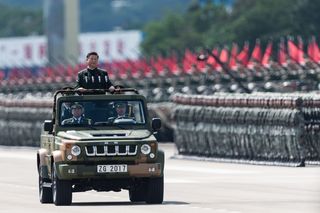
China’s strategic aims and conduct in the Indo-Pacific
- There is a general consensus among Americans and Australians that China seeks to displace the United States as the dominant power in East Asia and, eventually, the wider Indo-Pacific region. Although this objective is closely associated with President Xi Jinping’s assertive foreign and security policy, it predates his arrival in office, has deep support within the Chinese Communist Party (CCP) and is expected to continue beyond his administration. Beijing’s pursuit of regional dominance places it in competition with Indo-Pacific countries that want to preserve the current regional order in which all nations are free to exercise sovereignty without coercion. In terms of specific policy goals, China, at a minimum, is seeking to: prevent the United States and other foreign militaries from operating near mainland China or Chinese-claimed territories; divide Washington from its allies and weaken its military presence in the region; exercise influence, interference and, in some cases, control over other countries’ decisions with respect to key Chinese interests; and advance an alternative vision for Indo-Pacific order that is conducive to Beijing’s ambitions as an authoritarian great power.
- It is not yet clear whether Beijing seeks to challenge or displace US power at the global level. Indeed, there is disagreement on this point among and between Australians and Americans. While China’s strategic interests are increasingly global in scope, Beijing is primarily focussed on its continental and maritime periphery, particularly where the political-military balance is concerned. For this reason, the Indo-Pacific should be the primary focus of efforts by the United States and Australia to counteract Chinese coercion. It is nonetheless important to bear in mind that Beijing’s strategy is holistic and aims to exploit interconnections across regions. Its actions in the South China Sea, for instance, seek to create favourable outcomes and options in the broader Indian Ocean region, and vice versa. This is true in political-military terms and in the realm of public diplomacy, where carefully crafted narratives about China’s ascendency and the futility of resistance are designed to have a cross-regional deterrent impact.
- Beijing is using a multidimensional approach to achieve its strategic objectives, drawing on all aspects of national power and leveraging whole-of-nation resources. This involves multiple actions along the spectrum of competition: from influence campaigns, information operations and other forms of political warfare at the low end; to grey zone tactics, economic leverage and coercive statecraft in the middle; to conventional military threats and the role of strategic forces at the high end.
- In terms of peacetime competition, China increasingly relies on economic statecraft to shape the policy choices of regional nations and turn economic relationships into political leverage. This has involved: manipulating access to the Chinese market; using loans under the Belt and Road Initiative as inducements, debt-traps and punishments; influencing Chinese tourist and commodity flows; and engaging in bribery and corruption to capture elites. Grey zone coercion has also been effective in the maritime domain. In the South China Sea, for example, China’s naval, coastguard and maritime militias have expanded their calibrated disruption of other countries’ maritime and commercial activities owing, at least in part, to the availability of support facilities on China’s artificial islands. Although recent standoffs at sea with Vietnam and Malaysia and the exposure of predatory Belt and Road Initiative loans have generated some pushback, Beijing continues to see grey zone coercion and economic statecraft as highly successful strategic tools.
- China views its conventional military power as important for advancing some of its national security goals. According to doctrinal writing by the People’s Liberation Army (PLA), China would employ military means to deter threats against the mainland, prevent Taiwanese independence (and potentially pursue forcible reunification), protect or enforce its territorial claims, defend its maritime interests and sea lanes, and undertake a range of military operations other than war, including disaster relief and non-combatant evacuations. The PLA is preparing for the possibility of high-intensity war against the United States and its allies along the First Island Chain, where its investment in anti-access/area denial (A2/AD) capabilities has already undercut American military dominance. Yet, China’s military leaders do not yet appear confident that the PLA is ready for conflict; and its lack of experience in joint operations, limited high-end capabilities and deficiencies in crucial areas like anti-submarine warfare and amphibious operations are likely to limit its military options. Moreover, the further China operates from its periphery the less likely it is to use force against the United States or its allies, owing to serious weaknesses in its ability to project power or sustain high-intensity operations abroad. Over time, Chinese military reforms may address many of these deficiencies.
- Even where Beijing’s core regional interests are at stake, there is uncertainty over how much risk it would accept in initiating the use of military force. On one hand, China would prefer to “win without fighting” by deterring adversaries and employing multidimensional coercion to pressure target countries to comply with its will. In terms of its plans for military action, China would seek a quick, geographically localised and limited use of force to achieve a fait accompli victory before the United States or others can respond. It has not shown a willingness to fight costly wars and is unlikely to begin a conflict that it does not think it can win decisively. On the other hand, there is some evidence to suggest that Beijing’s risk calculus is changing. Not only has Xi been willing to court strategic risk — by, for example, militarising the South China Sea and increasing the use of coercive statecraft — but instances of tactical risk-taking by PLA forces are again on the rise — including periodic disruption of American naval patrols and aerial reconnaissance flights, and violations of Taiwanese and Japanese airspace. Moreover, some China experts hold that Beijing could still decide that a war with the United States over Taiwan serves its interests in enhancing domestic stability; others predict that Beijing will rely more heavily on the military to support its wider Indo-Pacific objectives over time. Even if China’s risk appetite is not rising substantially, the fact that the PLA continues to view conventional escalation management as possible may increase the likelihood that a regional tension will result in conflict.
- It is difficult to assess the degree of coordination behind China’s multidimensional strategy. There is no single organisation that coordinates strategy between the government, the party and the military; but there is mounting evidence of enhanced coordination across some entities. The National Security Commission, for example, is working to better incorporate the PLA into the overall policymaking process. There have also been notable improvements in the coordination of China’s maritime security agencies, paving the way for more integrated grey zone tactics in the South China Sea. In May 2018, for example, a joint task force composed of military, police and civilian vessels undertook a coordinated patrol around the Paracel Islands for the first time. More broadly, China’s apparent use of economic leverage vis-à-vis target states during political tensions — restricting sales of rare earths to Japan in 2010, reducing South Korean cultural imports and Chinese outbound tourist flows in 2016, and slowing Australian coal and wine exports in 2019 — suggest a level of whole-of-government coordination for strategic effect. This, however, is by no means comprehensive. The Belt and Road Initiative, despite being depicted as centrally run, is plagued by coordination problems and heavily shaped by corporations and domestic interest groups from the bottom up. Furthermore, although PLA documents outline a deterrence posture that combines economic, diplomatic, information and military resources, in practice China’s deterrent relies on a narrow range of military capabilities that are not operationally integrated.
- There is a general consensus that China’s coercive actions can be shaped and, at least in some cases, deterred. The fact that Beijing is hypersensitive about the success of its tactics, eager to minimise costs and risks, and frequently — though not always — responsive to external pushback present opportunities to influence its behaviour. China, for instance, has pledged to improve its loan practices and infrastructure projects in response to global criticism over the Belt and Road Initiative’s debt trap diplomacy. Similarly, Beijing’s desire to forestall the formation of an anti-China coalition have led it to make some adjustments to its tactics in the South China Sea — such as periodically reducing risky conduct and backing down in certain flashpoints with Southeast Asian claimants — despite the fact that its strategic aims have not changed. A sharper understanding of when and why China is likely to be responsive to other forms of pushback would assist the United States and Australia to marshal the political will, resources and resolve to nudge Beijing’s conduct towards less concerning modes of behaviour.
- Australians are more concerned than Americans by the fact that the recent shift towards an adversarial US-China relationship has not been accompanied by efforts to manage or reduce tensions; and has undermined, rather than strengthened, regional rules and institutions. Accordingly, the United States and its allies must pay greater attention to countering Chinese coercion in ways that do not undercut Washington’s broader influence, which is a function of its support for regional stability, rules, institutions and order.

Deterring and defending against grey zone coercion
- There is consensus among Australians and Americans that Chinese grey zone coercion is the day-to-day reality of strategic competition in the Indo-Pacific. As a contemporary form of political warfare, grey zone coercion is characterised by China’s pursuit of incremental shifts in the regional equilibrium to create geostrategic advantages over time. While Beijing’s tactics are by no means new — broadly involving a mix of non-military coercion, corruption and covert influence activity — the transformative connections of globalisation have exposed the “soft underbelly” of liberal democracies, magnifying the reach and impact of grey zone conduct. This disproportionately benefits authoritarian regimes like the Chinese Communist Party that are less inhibited by legal or ethical constraints, and better able to mobilise whole-of-nation resources to exploit the new vectors of coercion and influence that globalisation has opened.
- It is important to define the nature of different grey zone challenges. While the term “grey zone coercion” is frequently used to describe all measures short of war or measures that do not reach a target states’ threshold for military response, these definitions subsume different kinds of behaviour into one — and can lead to analytical errors and flawed policy conclusions. Examining China’s maritime coercion and political warfare in third countries through the same grey zone lens, for example, obscures more about tactics and effective responses than it reveals about common approaches in Chinese strategy. Although these tactics are often related — for example, Beijing’s use of coastguards and militias to harass rival claimants in the South China Sea is supported by influence operations on land designed to weaken target states’ capacity and willingness to resist maritime coercion — such modes of grey zone conduct should be treated as distinct, albeit related, policy challenges.
- How to distinguish between different kinds of grey zone coercion is a point of disagreement among and between Australians and Americans. One option could be to identify categories of grey zone activity on the basis of China’s objectives — such as incremental expansion, political influence and disinformation — rather than the means it employs. Some argue this approach would not only be more analytically accurate; but might make it easier for allied governments to determine their own “theories of victory,” including which agencies should lead the national response, what strengths and advantages exist, and what kind of response would be most useful in mitigating the threat and preventing further coercion. Others disagree, arguing that allied governments need to mirror Beijing’s seamless approach to multidimensional competition in which coercive actions are not distinct but exist along, and in support of, a peace-war spectrum. According to this view, failure to adopt an equally multidimensional approach will exacerbate bureaucratic silos and make it harder to counter China’s horizontal strategies. The only point of convergence among and between Australians and Americans is on the need to disaggregate grey zone activities into their vectors for coercion — such as maritime, economic, cyber and informational etc. — to enable more effective analysis and policy work at a tactical level.
- There is a risk that over-conceptualising grey zone coercion might complicate governments’ efforts to engage with and inform the general public about the challenges these activities pose democracy, sovereignty and national interests. Unfortunately, intellectual robustness does not always translate well into the public domain. This is particularly true when the most pressing objective is to build greater knowledge and awareness about the overall nature of the grey zone threat, which, in many cases, directly affects individuals and requires a degree of insight on their part to counteract. Simple messages may be more useful in the short-term. At the same time, some argue that record public distrust in democratic governments will complicate any effort to “take back” the narrative about grey zone coercion from a competitor like China.
- With regards to countering grey zone coercion, there is no consensus on whether or how best to apply a framework of deterrence. Many contend that the fluid, persistent and cross-cutting nature of China’s grey zone activities make “risk reduction” and “resilience building” more appropriate approaches than “deterrence” or “defence.” This is especially true insofar as low-level coercion or harmful non-coercive behaviour (such as corruption, disinformation and subversion) is concerned, as these activities mostly do not cross allied red lines. Others, by contrast, argue that “deterrence by denial” is a useful framework for developing strategies to counter various types of grey zone coercion. Not only does the logic of denial incorporate efforts to bolster democratic defences by mitigating risk and building resilience; it also provides a strategic rationale by which the United States and Australia can work to deter grey zone coercion — or its more egregious forms — by threatening to respond or impose costs in predetermined ways.
- Notwithstanding the differences in these two schools of thought, there is a broad agreement that Washington and Canberra need to focus on the following to deter grey zone coercion: be willing to accept costs and risks; be proactive; strengthen a whole-of-society approach; clarify the role of military tools; and develop an allied approach alongside other regional actors.
- Deterring Chinese grey zone coercion entails political costs and risks that the United States and Australia must be willing to bear and sustain over time. Measures to strengthen domestic resilience — such as laws criminalising covert foreign interference, screening of foreign direct investment and efforts to reduce economic dependence on China — will be financially and politically costly in the short-term, and involve a process of legislation, regulation and public consciousness-raising that may well be exploited by Beijing to stir opposition. Measures to call out Chinese actions and/or impose costs — such as the attribution of cyberattacks, enaction of sanctions or adoption of countervailing grey zone tactics — will be even more risky for governments. Clearly defining core interests, red lines and preferred courses for action ahead of time will assist the United States and Australia to prepare for these inevitable burdens; and must be accompanied by frank public conversations and signalling to strengthen domestic support. As legitimacy is the most important advantage that democracies hold over authoritarian systems, the United States and Australia must take care to ensure that counter grey zone strategies are rooted in liberal norms and, at a minimum, do not damage the democratic spaces — such as the media, civil society and political institutions — where political warfare typically takes place.
- Relatedly, the United States and Australia need to adopt a more proactive stance that will allow them to take the initiative in deterring Chinese grey zone coercion. Until recently, both have been too focussed on “countering” the grey zone problem by responding to actions after the fact. This has ceded momentum to Beijing and forced Canberra and Washington into a reactive posture that is ill-equipped to deal with the dynamic nature of the challenge. Moving to a more proactive stance involves understanding and anticipating how Beijing builds-up influence to acquire non-military points of leverage, and a willingness to take concrete steps to neutralise or flip this dynamic on its head. Australia’s world-leading decision to ban Huawei from its 5G network is one example of how states can pre-emptively neutralise a grey zone threat. Flipping the grey zone dynamic to disadvantage China requires shifting the burden of escalation back on Beijing by raising the costs and risks of its undesirable activities. This could involve any number of measures: from the threat of legal action or targeted sanctions to the exploitation of Beijing’s anxieties about foreign influence in places like Hong Kong and Taiwan.
- A cohesive whole-of-government approach is critical to deter and counteract Chinese grey zone coercion; but this will likely need to be broadened to the whole-of-society to be effective, given the vulnerability and capabilities of the non-government sector. Both strategies are difficult for liberal democracies, with the latter posing especially thorny state-society challenges. Australia has had some success in implementing a whole-of-government approach. This has included reforms to the Foreign Investment Review Board’s decision-making processes to account for national security considerations and inter-departmental coordination on Indo-Pacific infrastructure financing, but requires more seamless interagency coordination. Although there are efforts underway to knit together whole-of society coalitions — for example, by fostering coordination between universities and the intelligence community on foreign interference — this will require sustained effort, new regulations and better information sharing. The United States, for its part, has historically been dependent on an effective White House for coordinating whole-of-government efforts on national security. In the absence of strong central leadership on counter grey zone coercion, departmental initiatives are unlikely to gain traction, making ad hoc coordination on particular issues — like prosecuting cases of economic espionage — the most likely way forward in the short term. While a major grey zone crisis would galvanise the system into action, Beijing understands this and is unlikely to make such a misstep.
- It is important to clarify the role of military tools in deterring grey zone coercion. While many argue that a military mindset is ill-equipped to deal with the problem of peacetime competition, almost all agree that armed forces have a key role to play. What this should be, however, is a source of debate. Americans are divided on whether the Pentagon should take the lead in coordinating counter grey zone efforts, and on what lessons, if any, the United States can adapt from the Middle East to create grey zone dilemmas for China in the Indo-Pacific region. Australians see counter-coercion as an interagency process in which the Department of Defence plays a role, and are exploring new concepts like “accelerated warfare” to create highly agile forces that are equipped to deal with geopolitical situations where the traditional peace-war binary has collapsed. Both allies should devote more attention to specifying the roles and responsibilities of their armed forces in grey zone competition and how these connect with the broader whole-of-government strategies that are emerging.
- In deterring grey zone coercion, Australia and the United States need to understand where their collective interests are under threat and pursue greater deterrence capabilities using all levers of national power within an alliance framework. This will take a determined effort. Australian and American interests do not align seamlessly in all respects; and allied perspectives on the nature, severity and implications of China’s grey zone activities often differ in critical ways. Despite the operational closeness between both countries’ militaries, there is a bifurcation between allied bureaucracies on China at the strategic level. The new Indo-Pacific alliance coordination mechanism will be useful in managing these differences and focussing collective action on shared goals underscored by common values. More broadly, shared interests, values and a mutual commitment to the rule of law should also undergird the way the US-Australia alliance is operationalised with other likeminded partners in the Indo-Pacific. Crucially, in Canberra’s view, the US-Australia alliance must be in, of and for the region. This means that efforts to engage regional nations need to go beyond countering Chinese coercion if Canberra and Washington are to establish themselves as credible partners of choice.
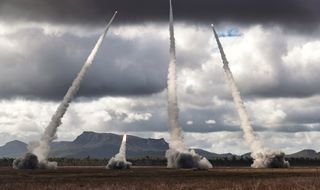
Rebuilding conventional deterrence and defence
- There is a stark consensus among Americans and Australians that the conventional balance of power in the Indo-Pacific is on a deeply worrying trajectory. Owing to China’s sustained investment in military modernisation and advanced anti-access/area denial (A2/AD) systems, the United States no longer enjoys unchallenged all-domain dominance in the Western Pacific. Washington’s unilateral capacity to uphold the status quo is, as a result, increasingly uncertain. Recognising this uncomfortable reality, the Trump administration’s 2018 National Defense Strategy and other strategic documents stress the urgency of strengthening conventional deterrence by denial vis-à-vis China as a top priority. Australia, too, is sharpening its own focus on the requirements of deterrence and exploring viable options as a middle power to contribute to upholding what the 2017 Foreign Policy White Paper terms a “regional balance favourable to our interests.” Both countries regard defence-wide reforms as critical in an era of great power rivalry where grey zone coercion and conventional military competition are likely to play out together during peacetime and conflict. Many experts, however, remain unconvinced that governments are doing enough and pursuing the right choices to rebuild conventional deterrence.
- While American experts support the National Defense Strategy’s recommendations, many are critical of its implementation. On force posture, there is a sense that the Pentagon has not yet determined the right mix of in-theatre, stand-off, penetrating and flow-in capabilities for deterring a Chinese fait accompli sufficiently early in a crisis, or for reassuring allies to the point that they will support or fight alongside US forces. At a minimum, this requires: a more resilient, distributed and survivable US presence inside China’s A2/AD threat envelope; resilient out-of-theatre logistics, transport and support infrastructure, including in Australia; a lowering of the cost-per-shot of missile exchanges; and a leveraging of American advantages in space, cyberspace, stealth and unmanned systems. Relatedly, on the need for new operational concepts for a contested Western Pacific, there is a frustration with the slow pace of development and experimentation. Indeed, there is sense that while the services are pursuing innovative — and, in the case of the US Marine Corps, ground-breaking — warfighting concepts, there is insufficient emphasis on developing joint and combined effects.
- Australians are acutely aware of the fact that the Australian Defence Force’s (ADF) relatively limited capabilities impose real constraints on how Canberra can pursue deterrence objectives in the region. Yet, there is little agreement on what this means in practice for a military that is now halfway through a process of comprehensive modernisation. One view is that the government’s investment in exquisite capital-intensive platforms — such as Attack-class submarines, fifth generation fighters and a hypersonic strike program — is necessary to give Australia the capacity to independently “rip an arm off” an Asian great power; and that this, in turn, will strengthen deterrence and defence. An opposing view is that such high-end assets, albeit necessary, are not sufficient to provide Canberra with this kind of independent capability. Indeed, some contend that any ADF action against the People’s Liberation Army in Southeast Asia or the Pacific would still require significant support from the US military; while others question the independent deterrent value of these systems, suggesting Canberra would never dare to “rip an arm off” China in the absence of coalition military action. In any case, Australia’s high-end systems, as currently planned, may prove too expensive and few to justify a decision by government to deploy them in future contingencies across the wider Indo-Pacific. These debates raise important questions about where and how the ADF should support conventional deterrence objectives in the region.
- There is a broad consensus between Americans and Australians that coordination among allied armed forces is central to rebuilding conventional deterrence and defence. The National Defense Strategy’s depiction of allies and partners as America’s strategic centre of gravity dovetails with the ADF’s own commitment to burden-sharing and collaboration. Forging closer US-Australia coordination on conventional deterrence vis-a-vis China, however, is easier said than done. It will require careful inspection of each country’s interests, appetite for risk taking and capacity for interoperability.
- Although Canberra and Washington have overlapping strategic outlooks for the Indo-Pacific, their security interests are not symmetrical. This is arguably more apparent in the conventional military domain than it is in the grey zone. Deterring Beijing from employing limited force to secure a fait accompli in a strategically significant section of the Western Pacific — such as Taiwan, the Japanese archipelago or parts of maritime Southeast Asia — requires a forward commitment of forces and agreed on contingency plans for rapid joint and/or combined action. Achieving this in an allied context is highly demanding; and would fundamentally change the character of the US-Australia alliance. Whether and under what circumstances Washington and Canberra deem this kind of evolution to be in their respective interests is an open question. At present, there is no consensus among Australian experts on whether such a role is in the national interest. Some argue that Chinese threats against US allies and partners in North and Southeast Asia sufficiently implicate Canberra’s interests in a favourable balance of power to warrant Australian support of US deterrence objectives, particularly in an era of increasingly strained American military resources. Others, by contrast, argue that such commitments would have to be weighed against Australia’s regional leadership obligations closer to home; or suggest that Washington and Canberra’s interests will always be out-of-sync insofar as the defence of North and Southeast Asia is respectively concerned. Americans, while unanimous in wanting more Australian involvement, are unconvinced that Canberra’s interest in regional deterrence would be sufficiently robust to be counted on in a conflict. Focussed consultations on prospective contingency plans and strategic wargames within the US-Australia alliance would serve to advance this critical discussion.
- Even if interests prove to be sufficiently aligned in particular contingencies, Australia and the United States will need to take steps to coordinate their respective appetite for risk. Insofar as deterrence depends on military capabilities and the political resolve to use them, Canberra and Washington must signal to Beijing where and under what circumstances each is prepared to escalate to force in defence of a red line. Again, this requires allied consultations ahead of time to avoid expectation gaps; in addition to concrete actions to make the commitment credible. In addition to targeted high-end exercises and wargames, some strategic taboos may need to be broken to communicate allied resolve. This could include: the placement of American long-range missiles on Australian soil under ADF command; introduction of THAAD-style missile defences into Southeast Asia in coordination with Australia and the host country; or the injection of new complementary capabilities into each other’s task groups, including unmanned platforms and new intelligence, surveillance and reconnaissance assets. How each ally thinks about escalation must also be aligned. On this note, while some US experts see a role for horizontal escalation in certain scenarios, by and large there is agreement between Americans and Australians that horizontal escalation is more likely to undercut alliances and undermine regional strategy.
- The United States and Australia will also need to continue advancing their mutual capacity for military interoperability. Despite recent improvements, the ability of the US Joint Force to be interoperable with its allies remains limited. This is particularly true insofar as intelligence and information sharing is concerned — an issue that will become more difficult as the demands of high-end warfare challenge existing justifications for the classification of certain information and raise technical questions about the ability to ensure secure communications between allies. The United States also needs to better incorporate allies like Australia into its high-end military exercises and experimentation agenda to ensure mutual awareness about how services are preparing for future war, with a view to facilitating, in time, opportunities for combined strategic planning. While US alliances remain grounded in fundamental principles and interests, there is a growing recognition by American experts that Washington needs to pay more attention to enabling joint planning, interoperability and the reconciliation of divergent national objectives.

The requirements of nuclear and strategic deterrence
- The Indo-Pacific’s nuclear landscape is in flux and becoming more dangerous. In an effort to reshape the strategic order, China, Russia and North Korea are intensifying all-domain competition against the United States and its allies along a spectrum of conflict that begins in the grey zone and continues seamlessly to the strategic-nuclear domain, including space and cyberspace. All three view nuclear weapons as important “shadow-casters” over almost all their activities, rather than as tools for deterrence or conflict termination exclusively. Their strategies have paid off: Washington and its allies no longer have the decisive conventional military advantages they once enjoyed over Beijing and Moscow. If this trend continues, decoupling between the United States and its allies will become a distinct possibility, especially during a conflict. Crucially, Beijing’s theory of victory involves the use of non-nuclear tools of escalation to erode American and allied resolve, and to provide it with conventional operational advantages in a limited conflict. This approach is based on an assessment that Washington is unlikely to use nuclear weapons outside of an all-out war, adding to its capacity to undercut allied assurance. Over time, China will become increasingly capable of leveraging pressure points to keep US allies from participating in collective military operations, including through the threat or use of nuclear weapons in extremis.
- On the frontlines of Chinese, Russian and North Korean coercion, America’s allies are driving the formulation of new deterrence demands. Indo-Pacific allies have been the most vocal. South Korea has implied that it wants Washington to tolerate its acquisition of an independent nuclear deterrent. Japan, for its part, insists that Washington should not accept mutual vulnerability as the basis of US-China strategic relations for fear that this could embolden Beijing to act more aggressively against Tokyo; and has also opted to become a more proactive partner in US extended deterrence. Both allies have pressed the United States for a more NATO-like defence commitment in Northeast Asia, even as Washington has already significantly strengthened its extended deterrence dialogues and operations with Tokyo and Seoul to give them a greater sense of enfranchisement. Australians, too, have begun to think anew about whether and how Canberra should increase its contribution to strategic deterrence. Structured, transparent and deliberate communications by US Strategic Command have gone a long way toward building the current level of US-Australia security and deterrence cooperation.
- America’s allies have advanced their deterrence demands and discussions within the framework of their alliances, as opposed to doing so outside of or in opposition to these longstanding arrangements. In other words, allied governments are seeking “alliance solutions” to what they perceive to be pressing or looming strategic problems. This is a testament to the way they view their relationship with Washington, and a function of the fact that the United States remains critical to their defence. But US allies are also anxious about the mixed messaging on alliances under the Trump administration. While they applaud the centrality that Washington has given to its alliance relationships in its key strategy documents, they are deeply concerned by the president’s hostility towards some US allies and the pressure that the administration has brought to bear on them. An additional concern is the United States’ apparent rejection of arms control as a tool of foreign policy. Canberra, in particular, regards the possibility that Washington might refuse to renew the US-Russia New START agreement as deeply troubling. Taken together, such developments make it difficult for allies, notably Australia, to publicly associate themselves with extended nuclear deterrence or make the case for additional measures to strengthen allied deterrence and defence in the region.
- Looking ahead, there is an emerging point of friction between the United States and Australia on the cost-benefit trade-offs of greater integration between America’s conventional and nuclear forces. Nor is there a consensus on this point among American experts. Sceptics from both countries view greater integration as dangerous because it leads to a lowering of the threshold for nuclear use. Specifically, many worry that America’s planned re-introduction of nuclear-armed submarine-launched cruise missiles (SLCMs) will blur distinctions between different target types and platforms, raising the escalation risks of a potential conventional conflict between US and Chinese naval forces. Allies, including Australia, underscore that Washington should not pursue deeper conventional-nuclear integration without consultation and, ideally, agreement as it could be detrimental to alliance consensus and planning. By contrast, advocates insist that although the jury is still out on how greater conventional-nuclear integration should proceed, options are required to: deliver an appropriate and coordinated response to a competitor’s multi-domain assault or potential nuclear strike; and to signal deterrence credibility. In their view, this calls for some degree of integration. Advocates also add that the United States and its allies should enhance cooperation in space and cyberspace and prepare their forces to work in nuclear conflict environments because competitors like China have already integrated their forces across all domains and do contemplate nuclear use in an escalating conflict. In response, some Australians contend that a key concern for Canberra is whether Washington adequately understands China’s strategic thinking and when its calculus shows restraint, particularly in regard to nuclear use.
- While there are a variety of views and disagreements about the best way to respond to the new concepts and capabilities developed by China, Russia and North Korea, there is a broad consensus in Washington and Canberra that an ambitious intellectual effort is needed to reflect on these issues. Despite having undertaken important work in recent years, the United States and its allies need to give greater priority to developing effective collective responses. This should involve more collaborative, in-depth and systematic analysis of competitors’ evolving warfighting strategies and theories of victory, none of which have received enough scrutiny in an alliance context. In particular, expertise on Chinese conventional and nuclear strategies — and possible changes in the context of Beijing’s ongoing military reforms — is seriously lacking, meaning that the United States and its allies too often make grand assumptions about Beijing’s strategic behaviour without sufficient empirical analysis. This must change and will require a far more intense program of interactions between deterrence strategists, Sinologists and alliance managers.
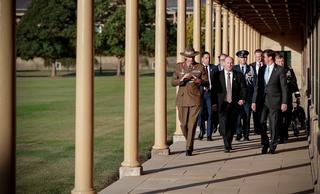
Optimising the alliance to bolster collective deterrence and defence
- There is a broad agreement between Americans and Australians that the US-Australia alliance needs to increase its contribution to collective deterrence and defence in an increasingly contested Indo-Pacific. Australia’s Minister of Defence Linda Reynolds encapsulated this view during a major speech in Washington in November 2019 when she observed that: “deterrence is a joint responsibility for a shared purpose, one that no country, even the United States, can undertake alone.” Yet, realising this objective will be an ongoing challenge as there is no consensus on what degree of alignment is needed for deterrence or politically feasible in each country. Some argue that a shift towards capability aggregation and integrated policy planning for specific deterrence objectives will be required to deter Chinese adventurism, and that this should, over time, draw in other close security partners like Japan, India, Singapore and Indonesia. Others, by contrast, agree that this kind of alignment sends a powerful deterrent signal, but contend that it would encounter myriad legal, operational and bureaucratic obstacles. Crucially, it would depend fundamentally on the ability of Washington and Canberra to establish common positions on thorny questions about risk-taking and military escalation vis-à-vis China. Neither government wants to be locked into this kind of decision. As such, the United States and Australia will have to approach the goal of collective deterrence in an incremental way by following the loadstars of greater cooperation, coordination and interoperability.
- It is nonetheless crucial that the US-Australia alliance keeps up with the increasing pace and intensity of China’s multidimensional challenge to regional order. Although new and more focussed policy coordination mechanisms have recently been established for implementing Indo-Pacific strategies writ large, in terms of regional deterrence and defence objectives the US-Australia alliance has not been a first-order priority for Washington until now. As a result, planning, exercises and other activities relevant to these objectives are less developed than in US alliances with Japan and South Korea. This has allowed the alliance deterrence and defence toolkit to lag behind regional strategic challenges, exacerbated by realities of geography, capability constraints and the difficulties of extended peacetime operational planning. Even now, there is a concern among many US and Australian experts that defence policy coordination within the alliance remains too “top heavy” and focussed on higher-level strategic discussions, rather than on the operational realities of policy execution. The latter is essential and should be a priority because the nature of the challenge China presents in the grey zone, conventional and strategic domains requires the United States and Australia to resist its coercion from the outset. This is especially true when it comes to countering grey zone coercion as international policy, economic, legal and political coordination is needed to ensure resilience and to deny foreign interference across the alliance and partner network.
- Some Australian experts argue that any steps — no matter how incremental — to enhance collective deterrence and defence in the high-end conflict spectrum will require the United States to read-in Australia on its strategic and operational planning at a much earlier phase than it does today. This is no easy task. Despite the focus on allies in the 2018 National Defense Strategy, this kind of integration is at odds with the Pentagon’s traditional preference for fielding a self-reliant Joint Force that operates on the basis of independent plans. It demands very high levels of diplomatic trust, deep confidence in Canberra’s support and the political will to entrust Australia with key enabling, if not warfighting, roles. At the same time, it would also hinge on Canberra’s willingness to elevate its involvement in US military planning to the operational level, at least around certain predefined contingencies. Such an arrangement is necessary to provide Australia with assurances that it has a stake in and can meaningfully influence the direction of Washington’s regional military strategy — without which Canberra is likely to be demotivated or unable to leverage its potential for shared operational goals.
- Relatedly, any move to enhance the alliance’s contribution to deterrence in the region must involve a discussion about the appropriate division of labour between the United States, Australia and other security partners. This requires clear decisions about roles and responsibilities; and a shared understanding of the conditions under which different allies will participate in specific missions and contingencies. While all this is central to the credibility of alliance commitments to enforce shared red-lines, none of these issues has received sufficient leadership focus within the US-Australia alliance. Crucially, as decisions about a strategic division of labour have major implications for force structure and investment priorities, they must be considered well ahead of time. Australia, for instance, needs to make different choices based on whether it will directly contribute to high-end warfighting in Northeast Asia, defend Australia as a support hub and base for operations, secure regional maritime spaces or lead a regional response to limited war challenges. While force structure will always, at some level, be designed with flexibility in mind, it can be more effectively carried out from an alliance coordination standpoint when expectations about future roles and responsibilities inform current priorities.
- From Washington’s perspective, Taiwan is the “pacing scenario” for the US military and for allied progress towards collective deterrence and defence. It is set to become an increasingly difficult issue in the US-Australia alliance. Over the short-term, the Trump administration’s policy is to expand Taiwan’s diplomatic space while “speaking softly and carrying a bigger and bigger stick.” This is intended to show Beijing that the United States is willing and able to enforce its security commitments. But it is also designed to draw allies, like Australia, into the Taiwan debate because — according to a growing number of US national security thinkers — Washington’s credibility over Taiwan will increasingly hinge on Beijing believing that America’s allies will also stand up for its security. Accordingly, Washington’s long-term agenda is likely to focus on determining what kind of US-led military coalition may be required and enlisting its allies to take part. This approach remains controversial within the United States. Crucially, most allies, including Australia, do not have a clear sense of what American objectives or expectations might be in a Taiwan contingency; and, while willing to think through possible scenarios, fear that they may become entangled with Washington’s interests at the expense of their own. Although some Australian experts argue that Canberra should have a stake in the defence of a major Northeast Asian democracy, others contend that Australia’s interests in any Northeast Asian conflict remain unclear at best. Americans, too, are divided on whether there is a domestic political consensus on defending Taiwan and are pessimistic about the level of public support for this policy. It is nonetheless an increasingly pressing deterrence issue that warrants far greater discussion inside the US-Australia alliance.
- One of the most promising ways to optimise the alliance for collective deterrence is to strengthen military interoperability and defence industry collaboration. There is a broad consensus among Americans and Australians that this process should work towards fostering military “interchangeability” and defence industrial “integration” so that both countries can work together to sustain a competitive technological advantage. Despite some progress on these fronts there is significant room for improvement. Both allies would gain by relaxing US barriers to software transfer to enable Australian platforms to use the same military systems as their American counterparts, which would ensure consistency and effectiveness on the battlefield. More specifically, steps must be taken by Congress and the State Department to remove the practical, legal and licensing restrictions that surround US technology sharing and transfer practices. Such obstacles are inhibiting Australia’s full incorporation into the National Technology and Industrial Base, limiting both countries’ ability to leverage each other’s advanced technology sectors. To build alliance synergies for future war scenarios, Washington and Canberra should prioritise co-developing new concepts, lead technological experimentation, and hold in-depth discussions about capability development, interoperability and regional posture.
- In negotiating all the above, Australia should be a more forthright ally and not hesitate to raise critical issues about the direction of the US-Australia alliance or Indo-Pacific strategic environment. Washington is accustomed to outspoken allies in Europe and the Middle East, and some Americans hold the view that Indo-Pacific allies get short-changed because they are overly deferential. Crucially, Canberra’s perspective can be a useful policy and bureaucratic tool in helping Washington — or parts of the government — to adapt its policies and strategies. Especially in this period of political uncertainty, the United States would welcome a greater leadership role from allies like Australia both inside and outside the alliance.
- Finally, at the broad strategic level, it remains unclear whether the optimal framework for approaching strategic competition with China should be understood as a contest between “spheres of influence” or a search for a favourable “balance of power.” While there is a rhetorical consensus that, in contrast to the way the Soviet Union was treated in the Cold War, Washington will not grant Beijing the right to exercise preferential control over its immediate neighbourhood, the establishment of a de facto Chinese sphere of influence remains a real possibility. Preventing its eventuality will require the United States, Australia and other allies and partners to increase their commitments to defending the regional order, while accepting that they will no longer enjoy all-domain military dominance.
Acknowledgements
United States Studies Centre
This activity received grant funding from the Australian Department of Defence
Pacific Forum
The opinions, findings, views, conclusions or recommendations contained herein are those of the authors and should not be interpreted as necessarily representing the official policies or endorsements, either expressed or implied, of the USAFA or the US Government.
This material is based on research sponsored by the USAFA, DTRA, and Pacific Forum International under agreement number FA7000-19-2-0011. The US Government is authorized to reproduce and distribute reprints for Governmental purposes notwithstanding any copyright notation thereon.
Distribution Statement A. Distribution unlimited.





